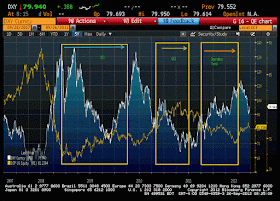Commodities can serve as a proxy for emerging market exposure in an investment portfolio. The simple rationale for using commodities as EM equity proxy is twofold. One, any increases in commodity demand will come form the emerging markets. Two, a growing majority of commodity supply comes from emerging markets.Both these factors mean that commodity prices will rise with the success of emerging markets.
Taking this exposure in commodities is also easy to execute. An exposure in commodities can be taken in a regulatory friendly environment through futures markets in the US and other developed countries. There is a significant liquidity for entry and exit in this markets. It is easy to go both long and short in futures to construct a pay-off from commodity moves.
The demand story. The graph above shows that the majority of the population (80%) comes form emerging markets. A majority of energy consumption occurs in the emerging markets. Almost 50% of global exports are coming through emerging markets as well as over 1/3 of global GDP is generated in EM. Increases in growth will lead to higher commodity prices. As emerging markets become more important on the demand side of global growth, commodity prices will rise.
Commodity production dominates the GDP of many emerging market countries. Some simple examples highlight the link between commodity production and growth in EM. In the mining area, places like South Africa are closely tied to precious metals mining. Indonesia and Chile are just two of the countries which have large exports of industrial metals. Energy production is driven by the drilling in the Middle East and Russia. Agriculture prices are affected by production in Latin America as well as Asia.
A simple analysis can show the link between emerging markets and commodities through measuring the beta of different equity indices with the DJUBS commodity index. The table provides the simple fact relationship for some large emerging market indices.
Index Beta (DJUBS Index)
S&P 500 .5
MSCI EM .78
MSCI EM Latin America .87
MSCI EM Asia .7
MSCI EM Middle East 1.025
Nevertheless, there are significant differences between these assets classes. Equities are subject to a different set of risks than a commodity portfolio. These differences mean that there will be value with holding both emerging market equities and commodities in a portfolio. equities will be subject to local regulatory, legal, and tax developments. There is less liquidity in many EM equity names. Equities, as the residual value of the firm, will be levered to price changes and developments in the measured reserves of the commodity. equities may provide dividend payments but the link between rising commodity prices and the value of the firm is usually not one for one.
The commodities will respond better to supply shocks and will be less sensitive to the activities within a particular country. Hence, there is still unique risk exposure in commodities.



















